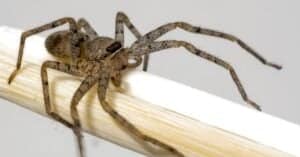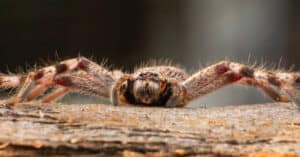You’ve seen them around and depending on how you feel about spiders, you either let them be, get curious enough to inspect them, or freak out. A little education goes a long way though. Discover the six black spiders crawling around Massachusetts and learn which is dangerous!
6 Black Spiders Crawling Around Massachusetts
1. Black Lace Weaver
Scientific name: Amaurobius ferox
The black lace weaver is all about the nightlife. It’s a nocturnal spider distinguished by its black body, but it does also have dark red, brown, and tan colorations. On their abdomens, there is a unique pattern that can help you identify this spider — it looks a bit like a small yellowish skull printed onto the spider.
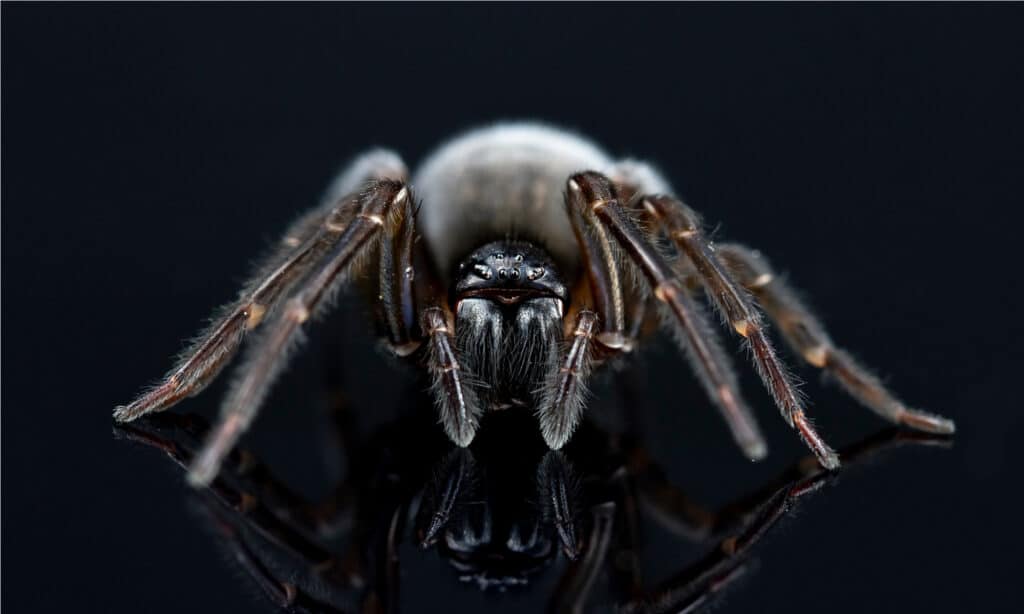
Black lace weavers are nocturnal.
©IanJHall/Shutterstock.com
The females grow up to 16 millimeters long and the males are smaller, only growing up to 10 millimeters long. These spiders like hanging around buildings where they can settle into a nice dark corner or crevice. They’re likely to find the spaces between stones cozy and may sometimes venture into basements.
2. Black and Yellow Garden Spider
Scientific name: Argiope aurantia
The black and yellow garden spider is like a performer in a circus act. This spider is brightly colored with black and yellow markings throughout its egg-shaped abdomen. The females grow just past one inch long and the males are significantly smaller.

Yellow garden spiders weave their webs in a zig-zag pattern.
©Ron Rowan Photography/Shutterstock.com
These spiders position their front pairs and hind pairs of legs tight together, which makes them look like they’re making an ‘X.’ Their webs are just as scandalous as they are, weaved in a zig-zag pattern that draws attention. These spiders go by other names, including the yellow garden Argiope, the yellow garden orb-weaver, the writing spider, and the zipper spider.
3. Eastern Parson Spider
Scientific name: Herpyllus ecclesiasticus
The eastern parson spider is a thing of nightmares for arachnophobes. These spiders aren’t the type of spider you’re used to that weaves a large web and stands by waiting for clueless prey to get stuck. This one is a hunter. It leaves webs by the wayside and uses the cover of nightfall to get out there and find its prey, moving unnervingly fast as they do.
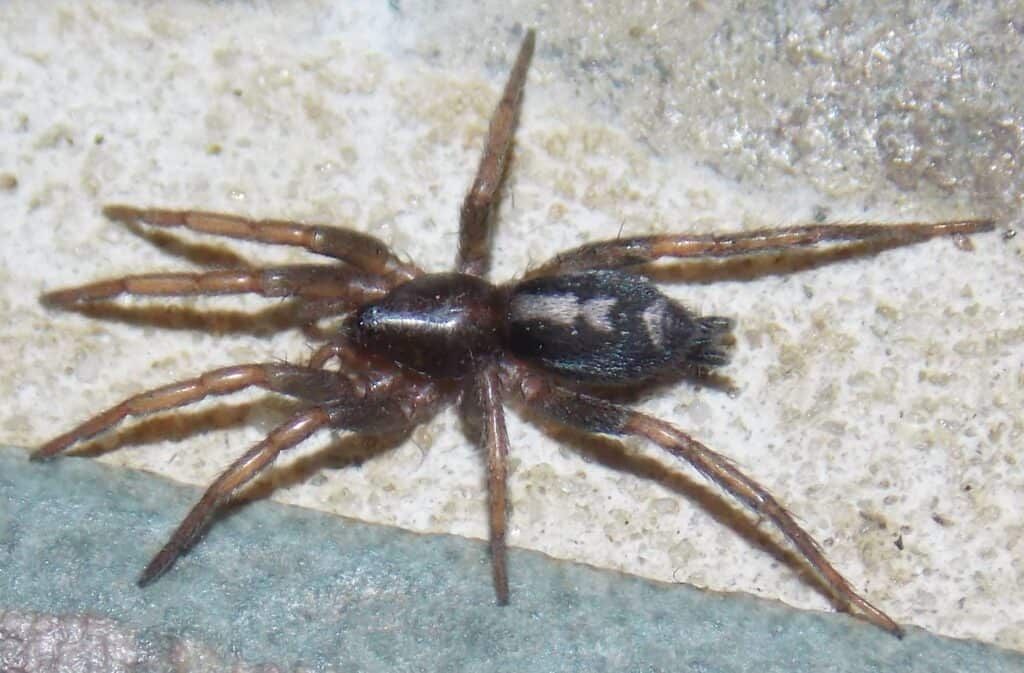
Eastern parson spiders actively hunt at night.
©Fyn Kynd/Flickr – License
These spiders are hairy and though they look quite intimidating in photos, the females only reach about 13 millimeters long, and the males, on average, make it to about six millimeters long. The hairs on their bodies are black, which gives them a dark color, but their legs are more of a chestnut brown.
4. Spined Micrathena
Scientific name: Micrathena gracilis
In continuing with nightmares for arachnophobes, enter the spined micrathena! This spider has a unique shape, with five spiny cones on the lateral parts of their abdomens. A close-up photo reveals this distinctive feature, but these spiders are small and often missed. They like wooded environments.
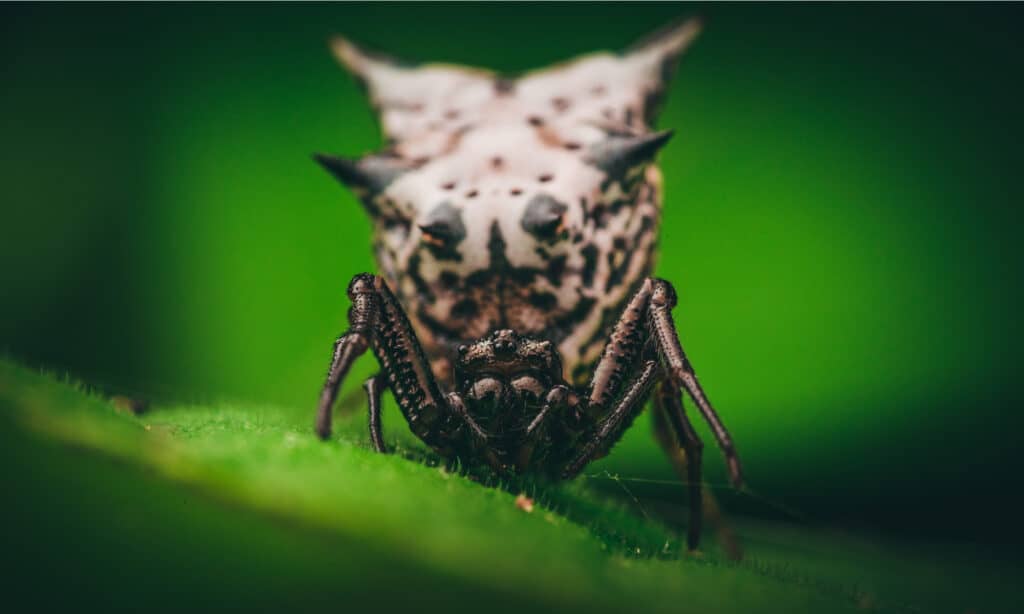
Spined micrathana spiders may be black, white, orange, and brown.
©Wirestock Creators/Shutterstock.com
The females are black and have several white markings on their bodies. Their bellies are shaped like cones, adding an even spinier look to this spider’s overall appearance. Although most of the time, these spiders are black, their colorations vary. They may also have other colors, including white, orange, and brown.
5. Bold Jumper
Scientific name: Phidippus audax
Bold jumper spiders are the tiny, cute ones that act like puppies and make those who fear spiders reconsider their stance. You’ve probably seen one or two on social media, and the close-ups allow you to appreciate how intelligent these little arachnids are. These are active hunting spiders, and their name refers to the impressively long distances they can jump.
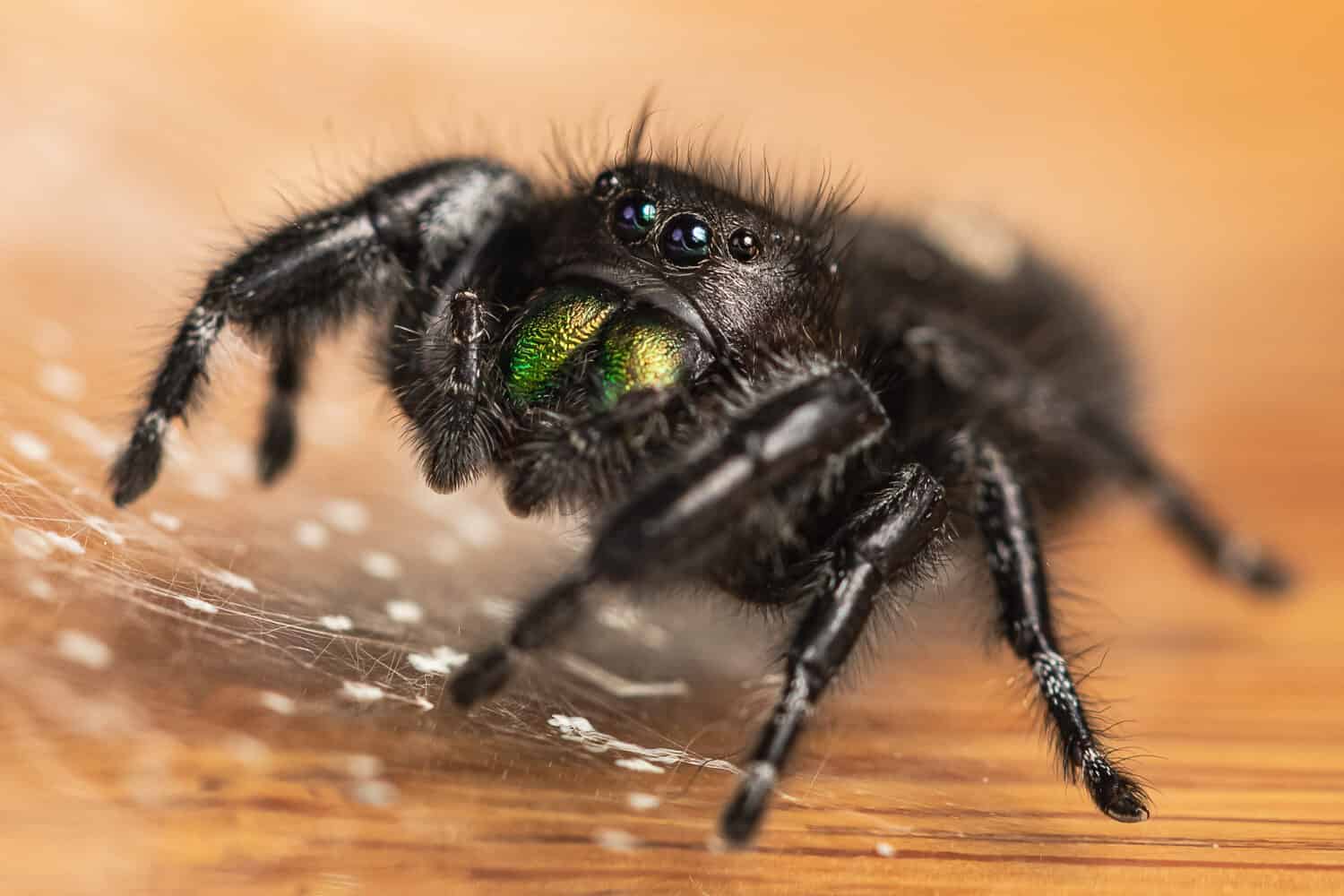
Bold jumper spiders are hunting spiders, able to jump great distances.
©Gill Thompson/Shutterstock.com
These black and hairy spiders are accented by their beautiful iridescent chelicerae. The females make it to 19 millimeters long and the males are a bit smaller, making it up to 13 millimeters long. As if they weren’t endearing enough, the males sport tufts of hair over their eyes, making it look like they have the tiniest eyebrows.
6. Northern Black Widow
Scientific name: Latrodectus variolus
Whereas many of the spiders crawling around Massachusetts don’t present a danger to humans, the northern black widow is a venomous spider. A bite could require you to receive medical attention. Luckily, though, these are reclusive and aren’t that interested in you. They’d rather flee than face you. They primarily enjoy the outdoors in places you don’t even frequent.
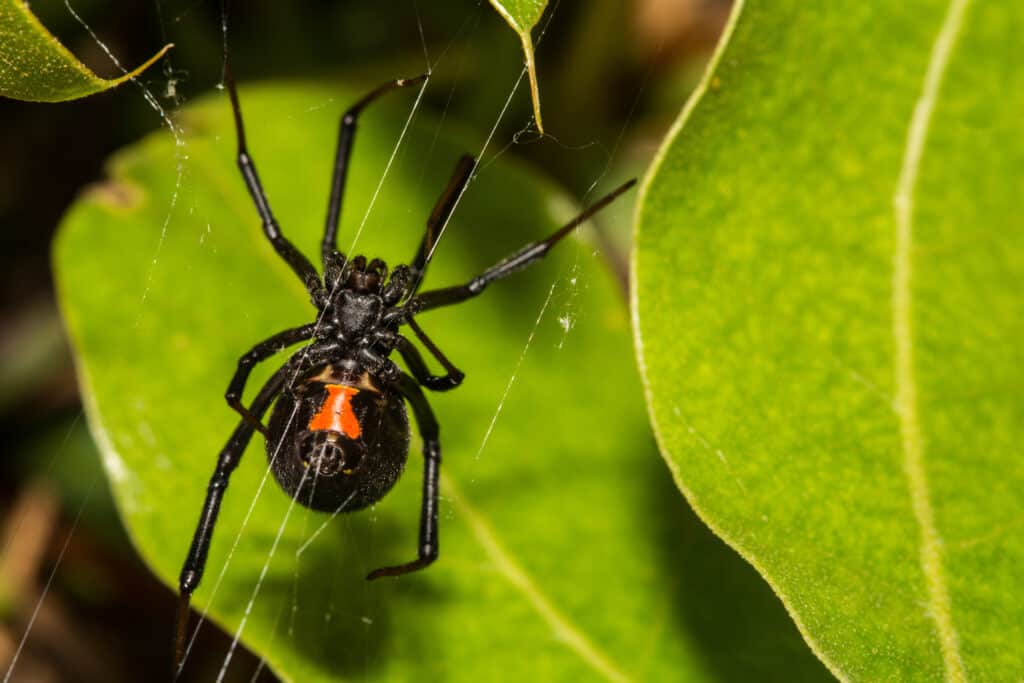
Northern black widow spiders are venomous.
©Jay Ondreicka/Shutterstock.com
These spiders have red markings on their abdomens. Often, the reddish, sometimes orange marking looks a lot like an hourglass. Aside from this bright marking, these spiders are all black. They have a bulbous center and long, dark black legs.
The photo featured at the top of this post is © iStock.com/NajaShots
Thank you for reading! Have some feedback for us? Contact the AZ Animals editorial team.





